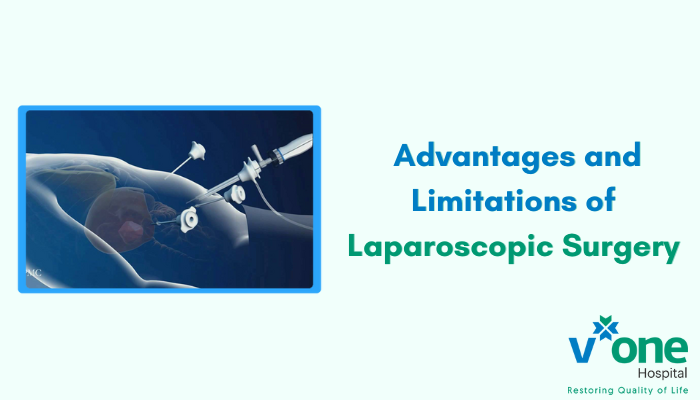Exploring the Advantages and Limitations of Laparoscopic Surgery
Laparoscopic surgery, also known as minimally invasive surgery, has revolutionized the field of surgical medicine by offering numerous benefits over traditional open surgery. In this comprehensive guide, we’ll delve into the advantages and limitations of laparoscopic surgery, providing insights into its applications, techniques, and considerations for patients and healthcare professionals alike.
Advantages of Laparoscopic Surgery
1. Minimal Scarring
Unlike open surgery, which requires large incisions, laparoscopic procedures involve small keyhole incisions, resulting in less visible scarring and improved cosmetic outcomes.
2. Reduced Pain and Discomfort
Laparoscopic surgery typically causes less trauma to surrounding tissues, leading to reduced postoperative pain and discomfort for patients. This can translate to shorter recovery times and decreased reliance on pain medications.
3. Faster Recovery
With smaller incisions and less tissue disruption, laparoscopic procedures generally result in quicker recovery times compared to traditional surgery. Patients may experience shorter hospital stays and a faster return to normal activities.
4. Lower Risk of Complications
Minimally invasive techniques minimize the risk of complications such as infection, bleeding, and wound-related issues, leading to improved patient safety and outcomes.
5. Enhanced Visualization
Laparoscopic surgery utilizes high-definition cameras and specialized instruments, providing surgeons with magnified, detailed views of the surgical site. This allows for greater precision and accuracy during procedures.
6. Reduced Blood Loss
Laparoscopic techniques employ meticulous hemostasis and precise tissue handling, resulting in minimal blood loss compared to open surgery. This can be particularly advantageous for patients with underlying health conditions or blood disorders.
7. Lower Risk of Hernias
The smaller incisions used in laparoscopic surgery reduce the risk of postoperative hernias, as there is less disruption to the abdominal wall and surrounding tissues.
Limitations of Laparoscopic Surgery
1. Technical Expertise Required
Laparoscopic surgery requires specialized training and expertise, as it involves manipulating instruments and performing intricate maneuvers within a confined space. Surgeons must undergo extensive training to master laparoscopic techniques effectively.
2. Longer Operative Times
While laparoscopic procedures offer numerous benefits, they can sometimes take longer to perform compared to traditional open surgery. This is due to the complexity of laparoscopic techniques and the meticulous nature of the procedure.
3. Limited Surgical Access
The confined space within the abdominal cavity can pose challenges in accessing certain anatomical structures or performing complex surgical tasks. In some cases, laparoscopic surgery may not be feasible, requiring conversion to open surgery for optimal outcomes.
4. Cost Considerations
Laparoscopic procedures may be associated with higher upfront costs compared to traditional surgery, as they require specialized equipment, instrumentation, and operating room setup. However, the potential benefits in terms of reduced hospital stays and faster recovery times may offset these initial costs in the long run.
5. Risk of Complications
While laparoscopic surgery is generally considered safe, it carries inherent risks of complications such as organ injury, bleeding, and infection. Surgeons must carefully assess patient suitability and weigh the risks and benefits of laparoscopic surgery on a case-by-case basis.
Technological Innovations in Laparoscopy
The field of laparoscopic surgery continues to evolve with advancements in technology, enhancing both the precision and safety of these procedures. Some notable innovations include:
- Robotic-Assisted Surgery: Robots like the Da Vinci system allow for greater precision, flexibility, and control than traditional laparoscopic instruments. This technology enables surgeons to perform complex procedures with enhanced dexterity and visualization.
- 3D Imaging and High-Definition Cameras: Modern laparoscopic systems now incorporate 3D imaging and high-definition cameras, providing surgeons with a clearer and more detailed view of the surgical site, which can improve accuracy.
- Enhanced Recovery Protocols (ERP): These protocols focus on optimizing patient recovery through preoperative, intraoperative, and postoperative care, leading to shorter hospital stays and faster recovery times.
Conclusion
Laparoscopic surgery offers numerous advantages over traditional open surgery, including minimal scarring, reduced pain, faster recovery, and lower risk of complications. However, it also presents certain limitations, such as the need for technical expertise, longer operative times, and potential cost considerations. By understanding the advantages and limitations of laparoscopic surgery, patients and healthcare professionals can make informed decisions regarding surgical treatment options and optimize patient outcomes.

